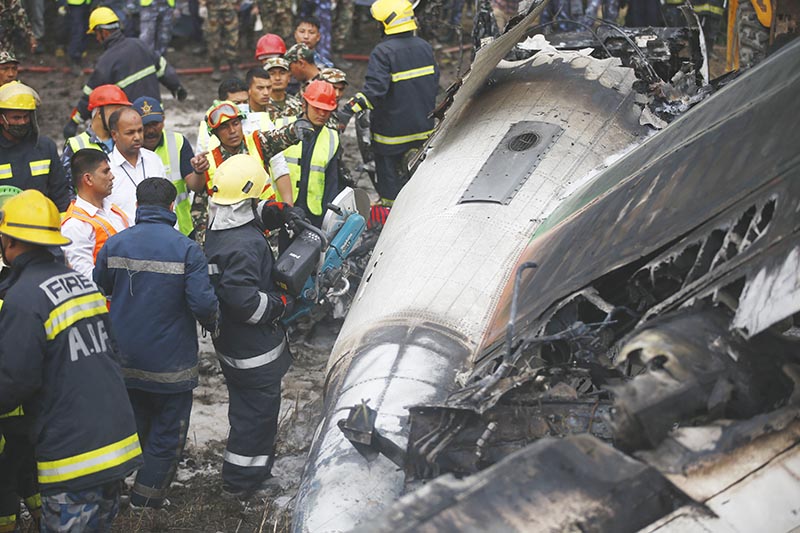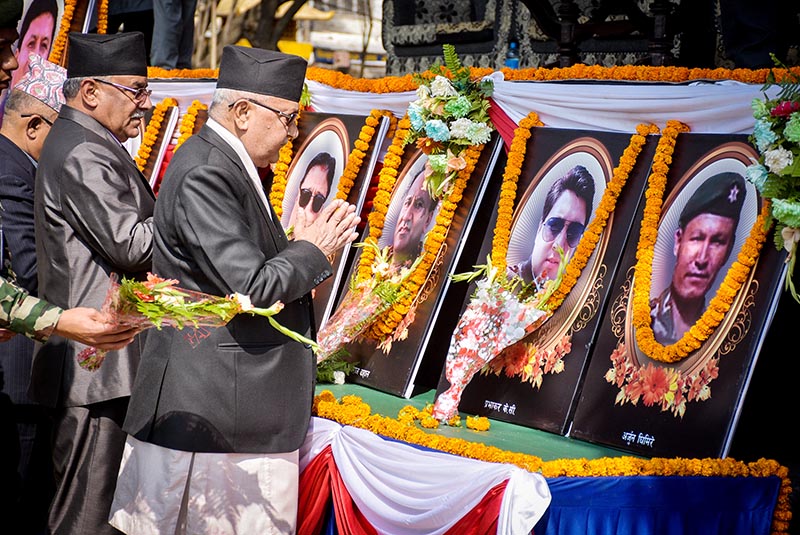Experts raise questions over capabilities of investigators
Kathmandu, March 7
Not long after the US Bangla Flight UBG-211 crash report was made public by the Ministry of Culture, Tourism and Civil Aviation, perhaps impressed with the performance of investigation commission chair, the government has once again appointed YP Gautam, a former director general at Civil Aviation Authority of Nepal and the ministry’s secretary, to head the probe panel on the recent Dynasty Air helicopter crash.

The crash had claimed the lives of seven people, including the flamboyant civil aviation minister Rabindra Adhikari and doyen of Nepal’s tourism Ang Tshering Sherpa.
Aviation experts agree that the Taplejung crash will have serious implications for Nepal’s civil aviation in the times to come as occupants were all high profile, and two belonged to Nepal’s air safety regulator.
Raising questions over the capabilities of the investigators, the experts who reviewed the report content shared some interesting insights with this daily. According to them, the UBG-211 report, though crediting the Transportation Safety Board, Canada for the decoding, analysis of flight recorders and subsequent animation, does not provide specific citations to indicate which parts of the report are courtesy TSB’s analysis and which are authored by the Nepali investigators.
Evidently, formal report writing with appropriate referencing is not Nepali investigators’ forte despite having participated in numerous air crash investigations while a quick review of formal investigation reports produced by TSB will show references to established aviation journals and publications in order to lend it academic credibility, an expert said.
The report is strangely mum on the state of flight following employed by US Bangla. Flight following is a mechanism by which the aircraft crew in flight maintains communications with its home base on matters of aircraft safety as well as efficiency and regularity of flight and is a mandatory International Civil Aviation Organisation standard.
“The flight dispatchers at the home base are responsible for monitoring the progress of the flight together with the pilot-in-command responsible for the safety of flight.”
ICAO’s stipulations on procedures for crash investigations clearly require minimum disturbance to the aircraft wreckage and crash scene and specifically requires that all pieces of human remains to be photographed and catalogued before they are moved.
“This was clearly not done in the aftermath of the UBG-211 crash and dead bodies were summarily moved from their resting places before the accident investigators began documenting the crash site. The investigation report is mum on this issue and no recommendations were made to the government,” another expert said. The probe panel members, however, refused to talk on the issue.
Besides, what is startling is that this high-handedness happened on Tribhuvan International Airport premises in broad daylight, even when CAAN is replete with aviation personnel trained in aircraft accident investigation, according to a senior official at the ministry.
One can easily wonder what might have happened at the recent helicopter crash site in Taplejung. No wonder the security personnel rifled through the wreckage to find the minister’s bodyguard’s personal weapon throwing the required norms to the winds, the official added.
A recommendation made to UBG airline states that it revised its training process to include provision of safety pilot during Kathmandu route clearance training. However, the analysis section of the report does not discuss the issue at all but a recommendation is made in a report to address a shortcoming –technically called finding. Interestingly, a mapping of the recommendations on the findings in the report shows that the report needed serious sub-editing which could perhaps be outsourced to TSB, given the international nature of the crash that would be reviewed in air crash investigation courses the world over.
“With such a shoddy report, it is unlikely that the European Commission and the ICAO would be impressed with Nepal’s accident investigation acumen, despite the United Kingdom-based Air Accidents Investigation Branch training the member secretary in accident investigation, who now sits on the Air Dynasty chopper crash investigation commission,” an expert commented.
READ ALSO:






